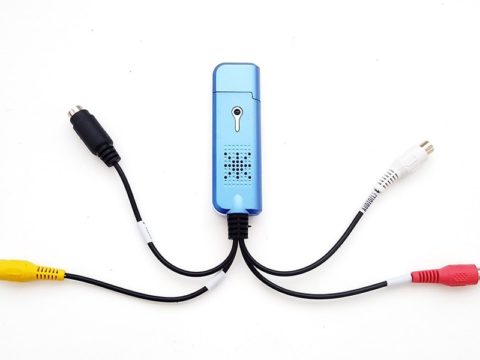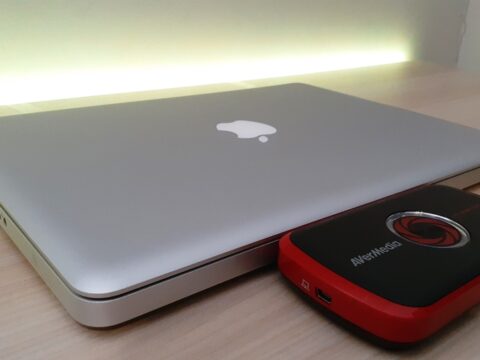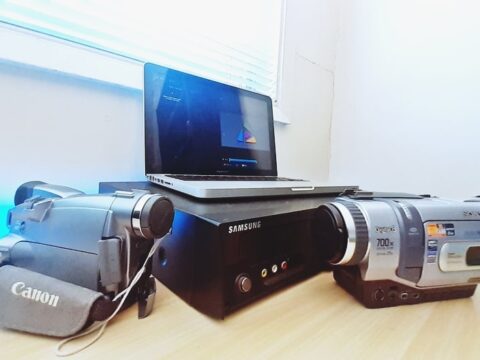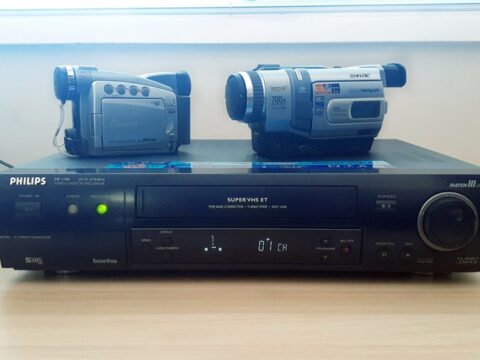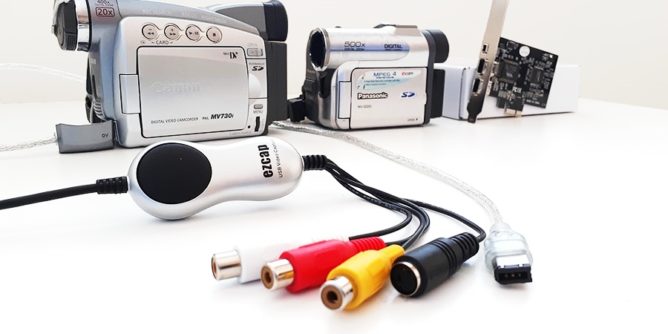
For approximately the same price, there are two ways to transfer your Mini DV tapes to your computer.
One method will test your technical skills but give you the best results.
The other method is easier and hassle free but will give you so-so results.
Which do you choose?
This is where people will be different and both choices are right just depends on what you want as the end result.
This is the second FireWire card I have (the first is on another computer that is used for Mini DV tapes) so I thought I would share the two ways to transfer a Mini DV tape by yourself.

Amazon are selling FireWire cards that are definitely worth a look.
- 1. PCIE-1394A will allow users add 4X 1394A (3X 6Pin and 1X 4Pin) interface on Windows desktop PCs and industrial...
- 2. Supports IEEE 1394A FireWire 400 datalink protocol, each 1394A interface will get 400Mbps (50MB/S) max data transfer...
Last update on 2024-11-21 / Affiliate links / Images from Amazon Product Advertising API
Some are definitely higher in price but there is no need for that.
On the other end of the spectrum are the simple and cheap USB capture cards like the ezcap brands.
The Ezcap 170 (also known as the ezcap116) is a great cheap device that I find myself using for multiple tests because its so reliable.
I’m just comparing two different devices for the same approx value.
FireWire – So Good It’s No Longer Made
All good things come to an end and the FireWire or the IEEE 1394 interface finally became superseded by Thunderbolt for Mac computers and USB 3.0 and USB -C.
Also in that time mobile phones had become the main tool people use to photograph and video their every day lives.
No-one is going to use a camera that can only shoot for sixty minutes and be cumbersome to carry (and let’s be honest, these days if a device cannot fit in a pocket it’s considered too big).

Because not a lot of devices use FireWire anymore that means buying one for a PC can be cheap.

You’ve probably seen a connection like this on your Mini DV camera. This is the 4 pin FireWire connection.

This is a great example using the Panasonic Mini DV camera.
We have the standard composite RCA cable out, a USB connection and finally the FireWire connection.
Can You transfer from Mini DV to Computer Using USB?
All these video cameras used USB 1.0.
There is no way to copy over gigabytes of data at a fast rate.
So what was it used for? Simply put – copying your photos that you take with the camera.

One firewire connection will give a better signal and is capable of transmitting the video and audio at a higher data rate.
So if using FireWire was the be all and end all, then why didn’t manufacturers supply the appropriate cables to get the best results?
The Mini DV camera in the photos is a MV730i and even if you look at the online manual, you can clearly see no IEEE 1394 cable is supplied.
Maybe they knew how fiddly it was to set up. That’s just my guess.
There are no HDMI to FireWire connections but there are FireWire to Thunderbolt adapters. Looking at Apple’s website review of it though, people seem unsatisfied.

FireWire – PROS & CONS

VHS Converter – PROS & CONS
Installing a FireWire Card on Your PC
If you have decided that you want to install a FireWire card onto your computer, you will need to be sure your motherboard has a pcie slot.
It should probably go without saying but please make sure you have:
- The computer unplugged when inserting any new cards into your computer.
- Wear a grounding anti-static wristband.

The card that I purchased also didn’t come with the screws to keep it in place. Make sure you have spare screws if that is the case.

The PCIe slot looks like the image above. Some motherboards may have quite a few so you will have plenty of space.
The computer I installed this on only had one.
The card will gently slot into place (don’t force it). When it is in place make sure to screw the card down into your PC case.

At this point you can plug the adapter into the card and test if the camera can be seen using your video editor.
There is an almost certainty that you cannot get the camera to connect with the PC.
Are you experiencing this?
More than likely your computer is using an old driver that doesn’t work .
Updating The Driver
Before you do start to update the drivers make sure the card is definitely connected to the PC and can see it.
You can do this by going into Device Manager on your computer.

What we’re doing is making sure the computer has the card listed in the Device Manager.
Even though the card is connected and Windows says there is nothing wrong with it, we are still going to update the driver.
Microsoft has an updated driver to download from their website.
For a thorough walkthrough make sure you read this article Install FireWire Card Windows 10. I did have a YouTube video earlier, but alas they must have left the platform.
With my card, once the update driver was installed I was good to go.
Connecting An Analogue VHS Converter
Connecting these kinds of video converters is kind of a no brainer but they are prone to have their issues with drivers as well.
That is due to so many products saying they are compatible with windows 8.1 and 10 when they are clearly not!

Simply connect your AV cable into the camera then connect the Video and Left/Right adapters into their matching colors.

Simply plug the USB into the PC and use the recording software you have.
Any driver problems can occur at this point but don’t fret.
There is an older post from 2015 that has a thorough list easycap-drivers-for-windows-8-1 (which work for Windows 10 as well).
Regardless of what Windows version you are running, if you are having problems with connections check that website.
Recording For Both Variations
You might be lucky and still have the old software CDs your camera came bundled with back in 2006.
Then again, if you are like the rest of us, you’ve either thrown them out years ago or simply have no idea where they could be.
If that’s you, then you will need some software to record your Mini DV cassettes.
You could download VirtualDub if the only option of recording has to be free software.
The software I went with (as I was testing anyway) was Magix Movie Edit Pro Premium (and no – it’s not an affiliate link).

Under the software recording sources there is an option for Mini DV cameras.
It doesn’t have to be just this software.
I’ve reviewed various software here, here and here that will record from FireWire.

When the software recognizes that the Mini DV camera is connected it will give me access to the camera’s functions as in PLAY, REWIND, FAST FORWARD etc directly from the computer.
You will be able to select a location to save the file and give the file a name.

The above image shows the end result of the capture and Magix will format the video as AVI.

The USB VHS Converter recorded the same 28 minute video through OBS Studio, which is a free software and ideal for these type of video grabbers.
I didn’t suffer any stutters or lag through this test.
Results For Both Variations

Because the sample video is constantly moving (as skaters do), it was hard to find a relatively still frame to compare.
The above shot shows how FireWire captures a clean look.

The USB converter displays an over saturated look.
I suppose you could always test through a video editor and lower the saturation, but that won’t give you the exact look as the FireWire.
That being said, using a USB VHS converter is not some poor solution. It all depends what your end result is for.

Side by side data details show the FireWire capture card is close to 6GB vs 2.3GB from the USB converter. Also of note is that OBS Studio recorded this capture in MP4 format.

As one last test I compressed the AVI file down to a more reasonable 1.2GB MP4 using the Magix editor.
Conclusion
If you have Mini DV cassettes that absolutely require the best transfer then a FireWire card is essential. No question about it!
That’s what I use for customers.
But if you’re not too fussed about the quality and just need to have a copy of old times, then the USB converters should be fine.
Just remember, both types can cause a headache with computers and drivers not speaking to eachother.
But with a bit of pre planning (and not expecting things to just work) then you can be prepared for any issues you might encounter.


